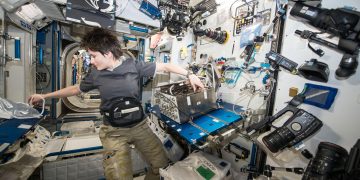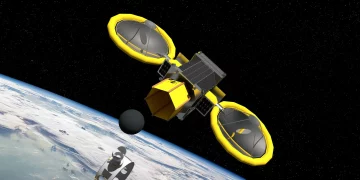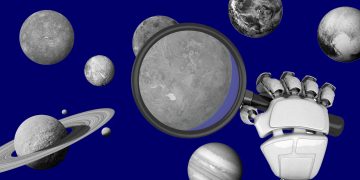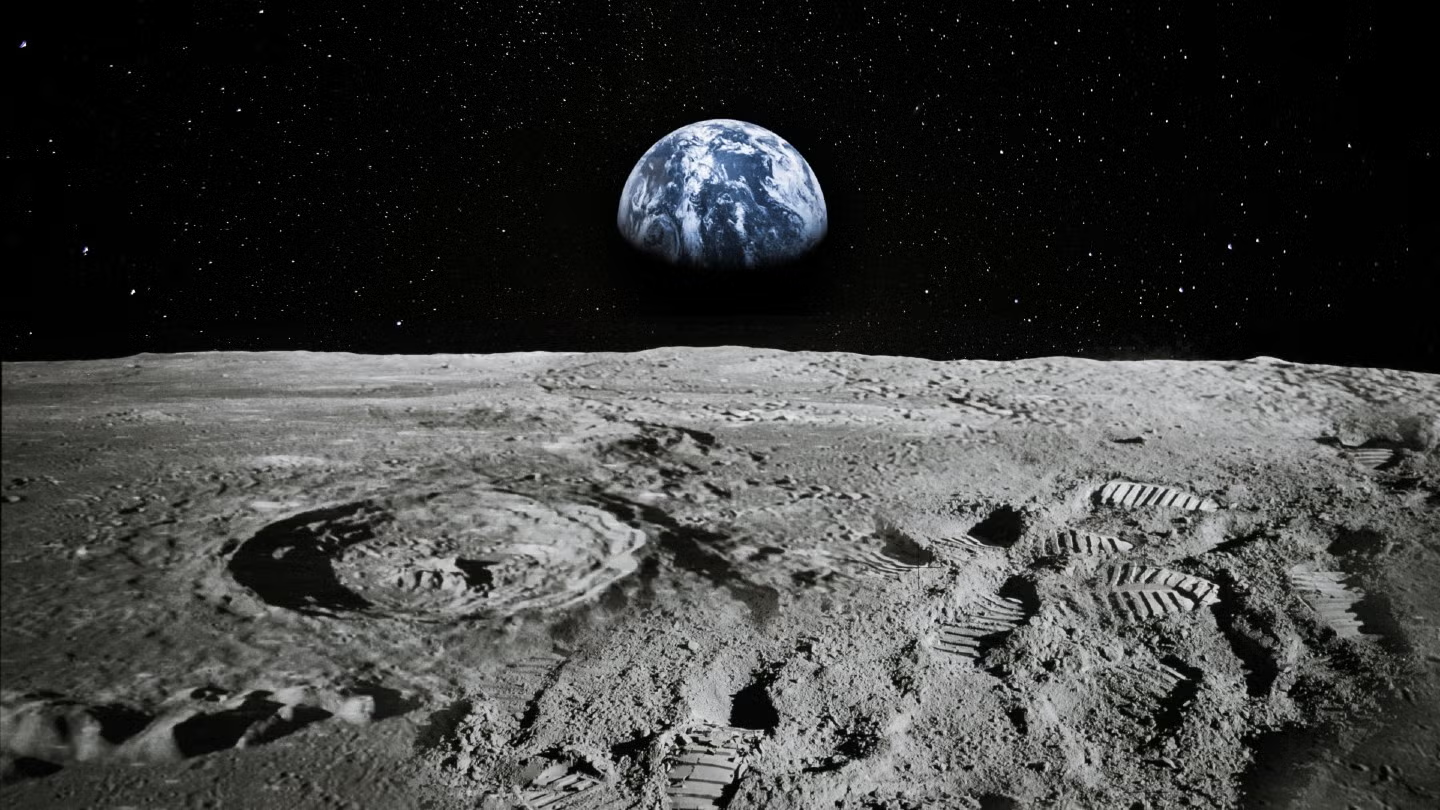Introduction
The Moon has captivated humanity for millennia. From the ancient civilizations that mapped its phases to the space missions of today, it has always held an air of mystery and wonder. But now, as our gaze shifts beyond Earth, a crucial question arises: is the Moon simply a pit stop on the way to deeper space exploration, or does it hold the potential to be a key player in humanity’s future within the solar system?
The Moon’s strategic location and abundant resources present both possibilities and challenges, offering a unique vantage point for understanding our place in the cosmos. This article delves into the Moon’s role in space exploration, its potential as a stepping stone for human expansion, and the scientific and economic significance it may hold in the coming decades.
A Natural Satellite or a Launch Pad?
The Moon’s Unique Position in the Solar System
The Moon, Earth’s only natural satellite, is approximately 384,400 kilometers away from us. This distance places it at the perfect point to serve as a launching pad for missions that venture deeper into space. Unlike the harsh environment of low Earth orbit (LEO) or the overwhelming distance of Mars, the Moon offers a relatively stable and accessible environment for both human habitation and resource extraction.
The Moon’s lack of atmosphere and its weak gravity (only about one-sixth of Earth’s) means that launching rockets from its surface could be far less energy-intensive than from Earth. This makes it an ideal candidate for future deep-space missions, potentially serving as a base of operations for exploring Mars, the asteroid belt, or beyond.
A Stepping Stone for Mars
NASA’s Artemis program, aiming to return humans to the Moon by the mid-2020s, reflects a renewed interest in the Moon as a stepping stone for further space exploration. The lunar surface could host an international base that supports both human settlement and the construction of infrastructure necessary for deep-space exploration.
In this context, the Moon is not merely a pit stop but a critical waypoint for Mars missions. By testing technology and survival strategies on the Moon, astronauts can prepare for the more complex and distant challenges of living and working on Mars, which presents a far more hostile environment.
Resources of the Moon: The Key to Self-Sufficiency?
Water Ice and Fuel Production

One of the most significant discoveries in lunar exploration is the presence of water ice at the Moon’s poles. Found in permanently shadowed craters, this water ice could provide a sustainable resource for future lunar missions. Not only can it supply drinking water, but it could also be broken down into hydrogen and oxygen, forming the building blocks for rocket fuel.
The prospect of “fueling up” on the Moon opens up the possibility of creating a sustainable fuel supply for spacecraft. This would make deep-space missions more viable, as spacecraft wouldn’t need to carry all their fuel from Earth. Instead, they could stockpile fuel on the Moon and refuel before venturing further into space.
Lunar Mining: A New Economic Frontier
The Moon also holds vast quantities of rare materials, such as helium-3, a potential fuel for future nuclear fusion reactors, and metals like platinum, nickel, and cobalt. These resources could support not only lunar operations but also industries on Earth. While mining on the Moon is currently speculative, the economic potential is immense. In the coming decades, we may witness the birth of a lunar mining industry that could rival Earth-based resource extraction.
Moreover, technologies developed for lunar mining could have applications here on Earth, further justifying investment in the Moon as a resource hub.
Scientific Exploration: Uncovering the Secrets of the Solar System
The Moon as a Time Capsule
The Moon is a natural laboratory for understanding the history of the solar system. Unlike Earth, which has been geologically active and constantly reshaped by weather, tectonic activity, and erosion, the Moon has remained largely unchanged for billions of years. Its surface holds clues to the early history of the solar system, including the formation of planets and the impacts that shaped the solar system’s evolution.
Lunar exploration, particularly the study of the Moon’s regolith (the loose, fragmented material that covers its surface), can offer insights into the asteroid impacts that also affected Earth. These ancient cosmic collisions are a key part of our understanding of planetary formation and the origins of life.
A Launch Site for Deep-Space Observatories
The Moon’s stable environment, combined with its lack of atmosphere, makes it an ideal location for scientific instruments. Imagine a lunar observatory built to study the stars, planets, and even distant galaxies without interference from Earth’s atmosphere or light pollution. Such observatories could provide unparalleled views of space, allowing scientists to study celestial bodies in ways that are impossible from Earth.
Moreover, the Moon’s far side, permanently shielded from Earth’s radio signals, is an ideal location for radio telescopes. These telescopes could detect signals from the early universe, providing critical information about the formation of galaxies and the origins of cosmic structures.
The Moon as a Test Bed for Human Life in Space
Sustaining Life on the Lunar Surface
A permanent lunar base is not only a stepping stone for exploration but could also be the key to developing the technology needed for long-term human habitation in space. Establishing a base on the Moon would require innovative solutions to problems such as life support, radiation protection, and energy generation.

Solar energy is a prime candidate for powering lunar operations, given the Moon’s exposure to sunlight for about 14 Earth days at a time. However, lunar regolith can be used to build shelters, shielding astronauts from harmful radiation and micrometeorite impacts. Developing reliable life-support systems, including closed-loop ecosystems, will also be crucial for long-term human presence beyond Earth.
Lunar Tourism: The Moon as a Destination
A Thriving Industry on the Horizon
The commercial space industry has rapidly evolved, and the Moon may soon be added to the list of space destinations. Just as Earth-bound tourism has evolved from local sightseeing to international travel, space tourism is set to become a significant industry. With companies like SpaceX, Blue Origin, and others aiming to make lunar travel a reality, the idea of visiting the Moon could become mainstream in the next few decades.
Lunar tourism is not just about sending the wealthy elite to the Moon, though. By creating a thriving economy based on lunar exploration, companies could support scientific research, provide jobs, and offer unprecedented opportunities for education and inspiration. It could spark a new era of human curiosity, where people from all walks of life dream of visiting the Moon.
Is the Moon Just a Pit Stop, or the Key to the Solar System?
The Moon as a Stepping Stone
In one sense, the Moon is undoubtedly a pit stop—a necessary waypoint for exploring the rest of the solar system. The lunar surface offers a unique opportunity to test technologies, refine human spaceflight capabilities, and learn how to live and work in the vacuum of space. For missions to Mars, Europa, and beyond, the Moon is an essential part of the training ground. It provides everything we need to prepare for the challenges of longer, more distant space missions.
The Moon as a Gateway to the Cosmos
But it would be shortsighted to view the Moon solely as a stepping stone. With its resources, scientific potential, and strategic location, the Moon could serve as a base for an enduring human presence in the solar system. Lunar mining could fuel the expansion of human civilization, while scientific exploration could lead to new insights about the origins of life and the nature of the universe.
In this sense, the Moon could be far more than just a pit stop—it could be a key to unlocking the full potential of the solar system. As humanity’s first extra-terrestrial outpost, the Moon holds the promise of transforming our relationship with space.
Conclusion
The Moon is no longer just an enigmatic object in the night sky; it is an essential component of our future in space. Whether it serves as a stepping stone to Mars, a hub for mining rare resources, or a base for scientific research, the Moon is poised to play a pivotal role in the next chapter of human exploration. By tapping into its resources and strategic location, we can extend humanity’s reach beyond Earth and into the broader solar system.
As the space race continues to unfold, the question is no longer whether the Moon is just a pit stop, but how it will become the launchpad for our journey into the cosmos.


















































Discussion about this post